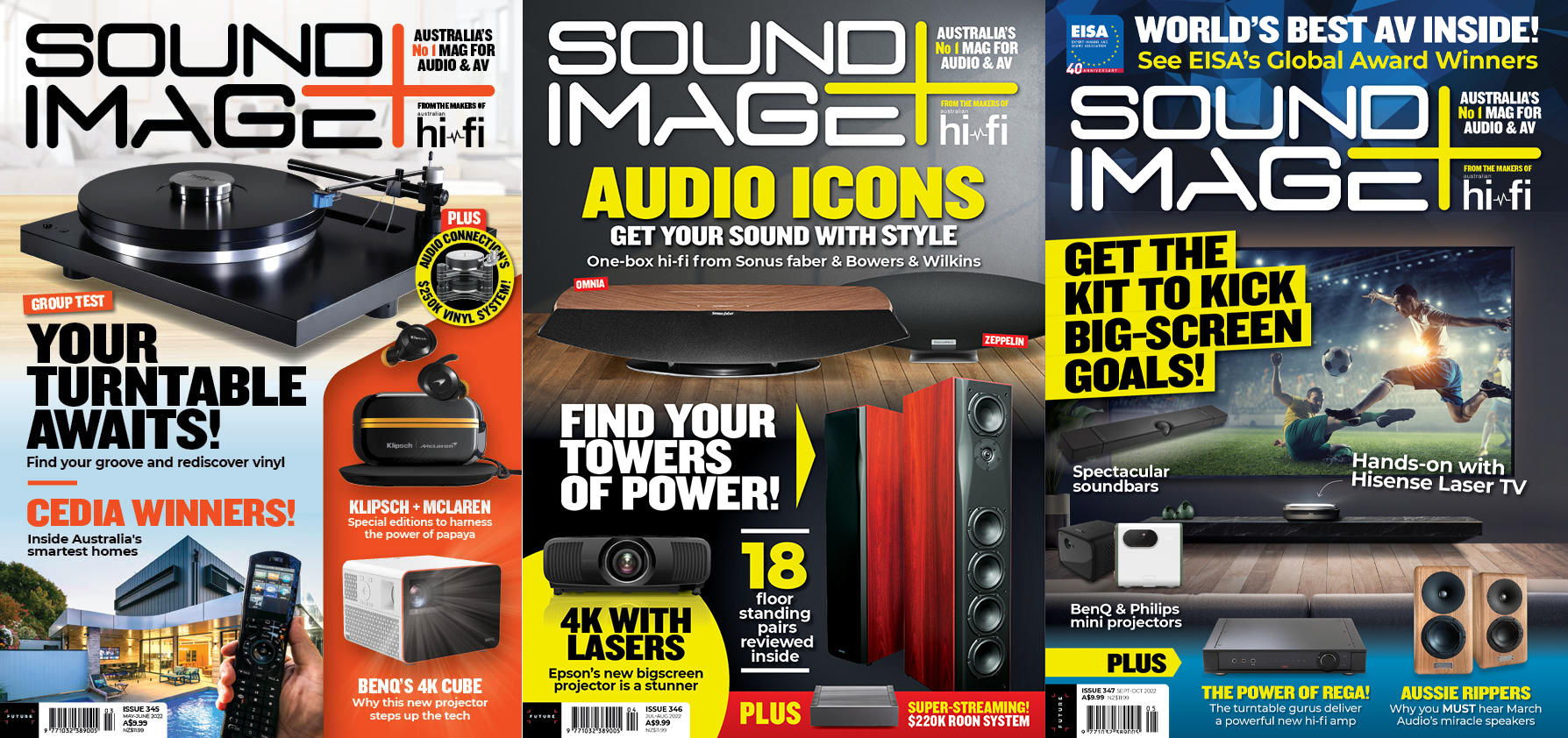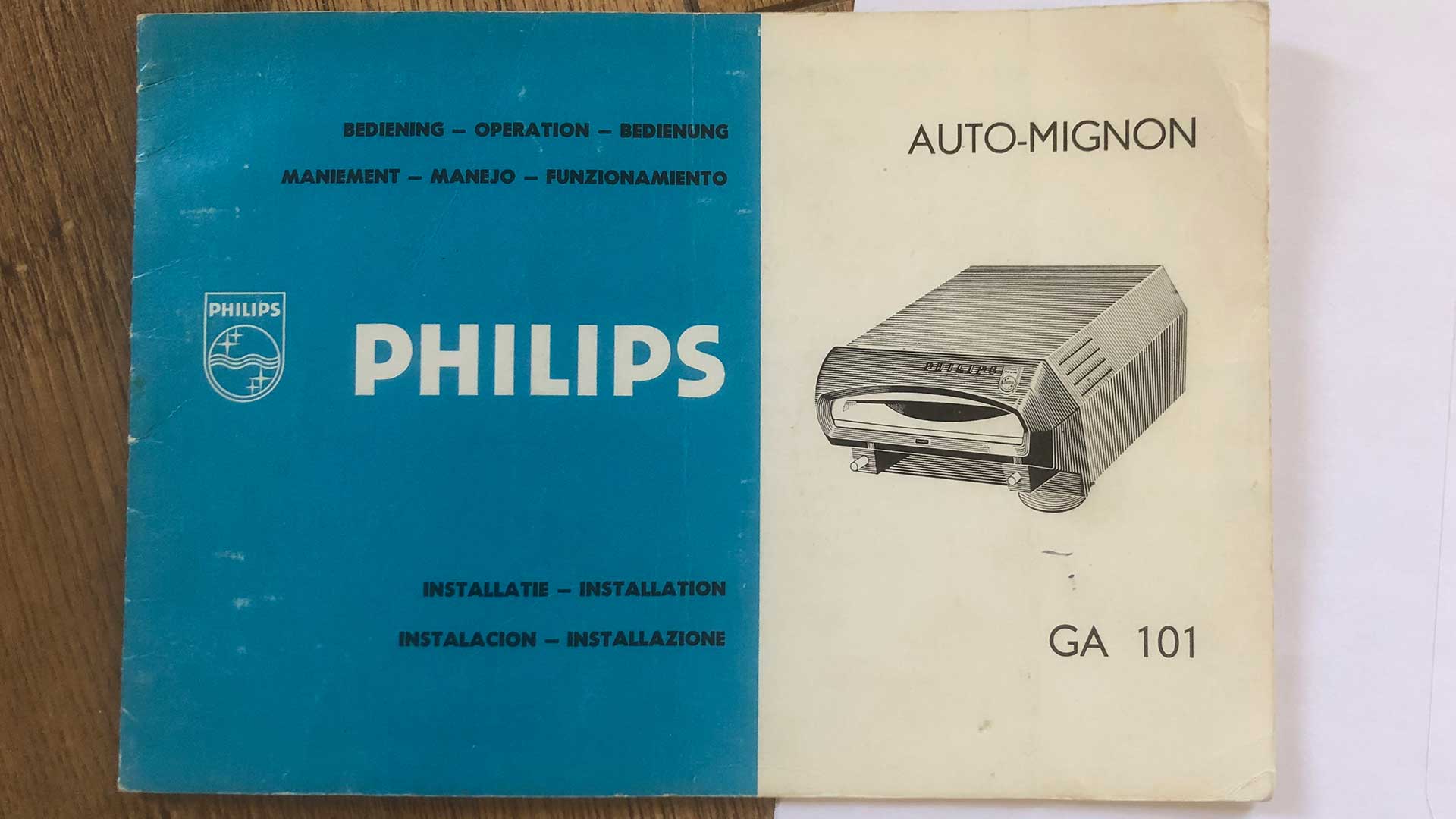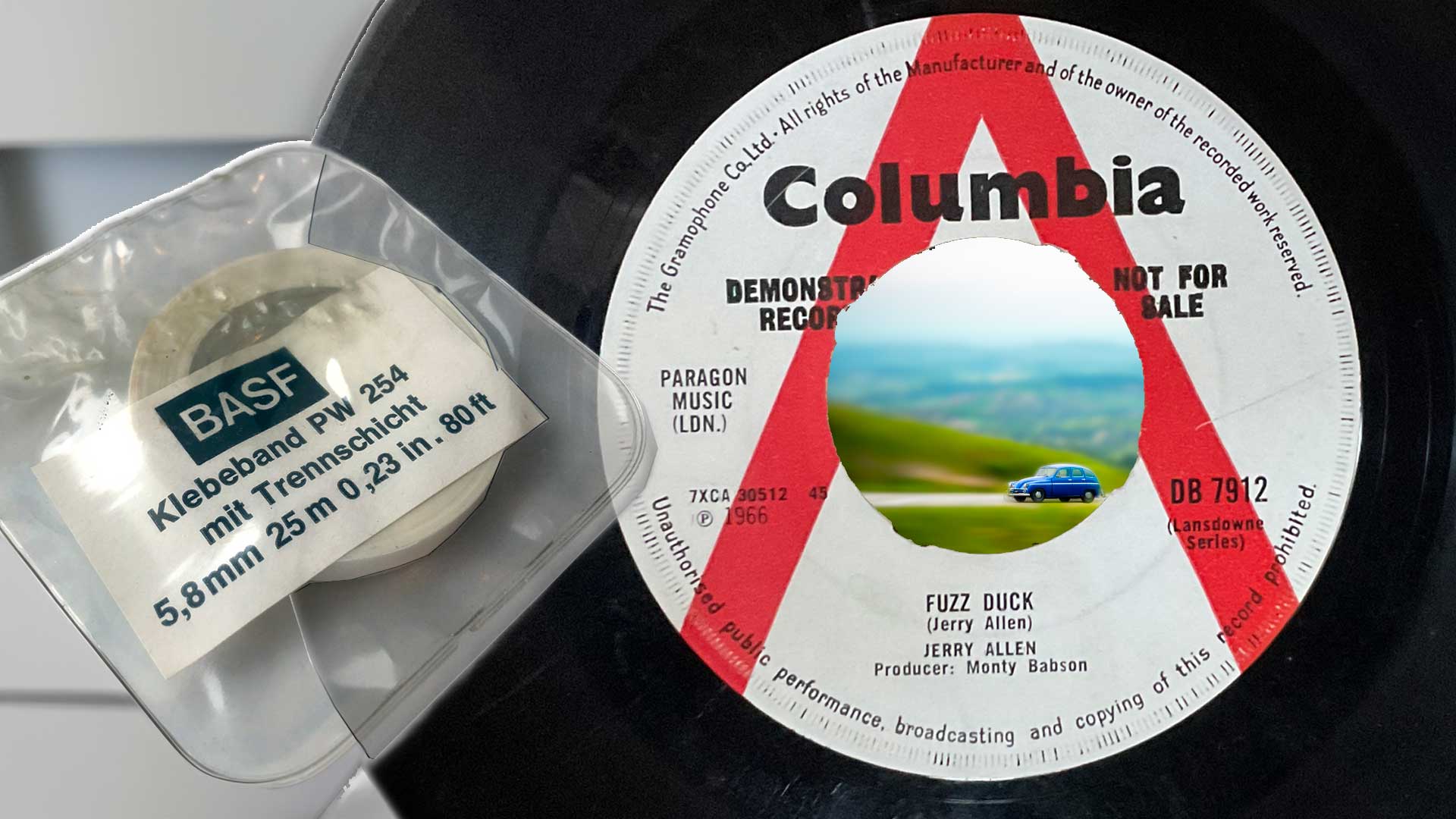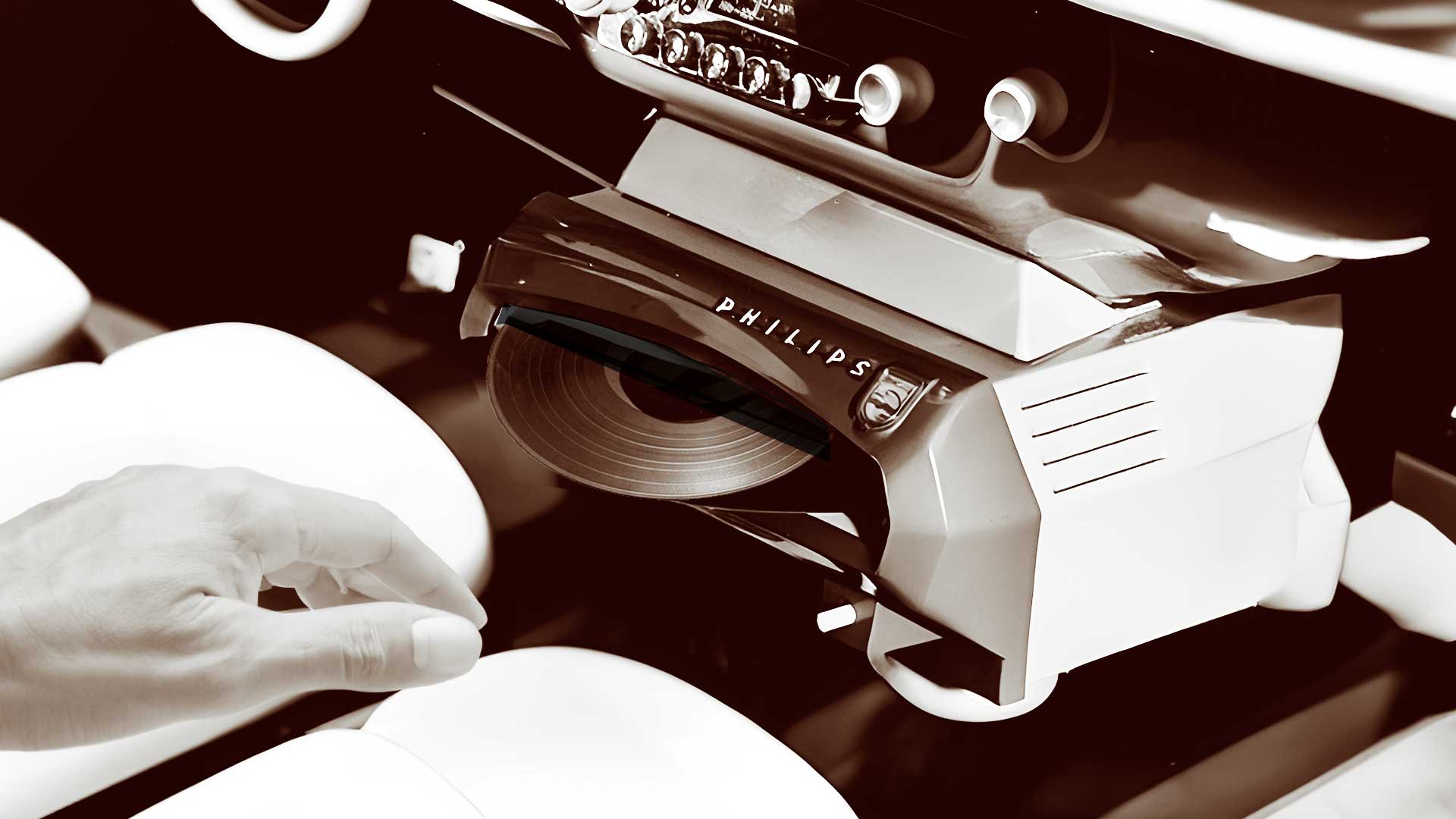I grew up playing vinyl in the car. Can we do that again please?
Dude, where's my carMignon?


This feature originally appeared in Sound+Image magazine, Australian sister publication to What Hi-Fi?. Click here for more information on Sound+Image, including digital editions and details on how you can subscribe.
If you go through my singles collection (not that I’d let you), you’ll find that a great many of my 45s from the late 1960s and early 1970s have their centres punched out.
This is not uncommon for that era and the decade preceding, and I can hear the vinyl cognoscenti among you saying, ‘Ah yes, those will be jukebox singles’ – because jukeboxes required records with no centres so they could be held suitably firmly on a thick spindle to play reliably while girls in bobby sox were dancing round them in milk bars, or whatever really went on in those days.
I was told only recently by a friend that she subscribed to a record club which sent you used jukebox 45s – something of a lottery, I’d have thought, but cheap, apparently, and that was the point.
Indeed in America, I gather, singles all came with their centres punched out, and they had singles-only players with vast centre spindles around which their 45s would revolve.
But no, that’s not why so many of my singles have holes in them. We had punched out their centres deliberately, and then kept a good supply of plastic spiders (see Fig.1 below) in our house to refill the holes for proper record player use.
Meanwhile we would stack them into a sturdy record box and take them on holiday, to be played in the car.

Yes, the car. People look at me quizzically when I mention our in-car record player (Fig 2 above, and main image), because the idea is clearly madness. And I could never confirm my childhood memory by pointing to a model or a make; I was too young to remember.
The latest hi-fi, home cinema and tech news, reviews, buying advice and deals, direct to your inbox.
But finally I have the details. I was back in the UK recently to help clear out the family home after 63 years of occupation and storage, and one of the major tasks was to clear my father’s tool cupboard, which was not so much full of tools as floor-to-ceiling every shelf stacked with biscuit tins full of bits that might be one day useful but clearly never quite were – half plugs, lengths of cable, 2000 rubber washers of every size, and don’t get me started on the endless jars of screws where you unscrew the jar itself from fixed lids that were nailed to the shelf above.
My Dad died 20 years ago, but it took a house move for anyone to go through all that. I found myself laughing regularly at the stuff he had kept, and some of his weird wiring spares, one of which was a DIN plug on a flying wire with an electric blanket switch at the other end; I’m sure that’ll make sense to someone, but it baffled me, and we were probably lucky to make it through to adulthood without a major house fire.
There were nice period finds in there – some BASF Klebeband PW 254 (which is splicing tape for editing reel-to-reels), about a dozen bodgers, at least two dozen massively heavy metal files going back at least to my grandfather, who was a carpenter in Oxford, but confusingly also a Bodleian Library assistant, or so I believe. Perhaps he made their shelves.
Anyway, somewhere near the back of Dad’s middle cupboard shelf I found, in pretty pristine condition, the original manual for our in-car record player – a Philips ‘autoMignon’, or ‘carMignon’ in English.

So at last I can Google it, and find out more.
There are extant examples in a number of museums, and it seems that we were in rather illustrious company in having such state-of-the-art in-car entertainment – Mohammed Ali had a Philips carMignon in his 1959 Cadillac Eldorado. George Harrison had one in his E-Type 3.8 Jaguar.
Our Philips was in a perhaps-less-glamorous Austin Cambridge (registration plate AVP 767B in case it’s out there in some car yard) – and just to clarify, that's not my mother in the image at the top, or an Austin Cambridge, but it is the carMignon, in all its slot-loading glory.
To have a vinyl spinner in the car certainly made holiday travel much less ‘Are we there yet?’ and rather more ‘Can I can play Fuzz Duck* again?’

I assume it was really there for my father, a BBC radio producer, to audition new 45 releases, and no doubt my financially-astute mother would be on top of any consequent tax concessions, if there were such things in those days.
So, as everyone always asks, why didn’t the records jump all the time?
It was slot-loaded: you pushed your singles into a suspended sandwich of white plastic, as I remember, all mounted on some remarkable spring mechanism which kept discs playing smoothly down country lanes en route to Fishguard despite everything else being bounced around thanks to Mother’s penchant for ‘shortcuts’.
("We did sometimes go some quite mountainous routes, didn’t we,” she recalled with her usual understatement when I reminded her of this recently – although to be fair she was clearly excellent at journey optimisation, as I’ve found using the Waze navigation app in the UK to be remarkably similar, and with no option to tick for ‘Avoid lanes that are narrower than my car’.)
For those particularly interested in the mechanism, one 'delcam1n0' on the site VinylEngine has posted interior images of the AG2101 model back in 2007. He/she/they also clarifies that it used a sapphire stylus. (We've tried reaching out for permission to show the pics here, but no luck, so if you're listening Delcam1n0, please make contact!)

I’m guessing that despite the celebrity endorsements, the autoMignon can’t have been a huge seller – the manual has a hand-typed erratum pasted in to confirm it works with 12V batteries, and there’s nothing in there about stylus replacement so heaven knows what force it was using to drag that sapphire needle reliably through those grooves. There’s a wiring diagram on the back, but judging from the notes my father had pencilled over it, he’d clearly rejigged that as well (perhaps with a DIN plug connected to an electric blanket switch).
But I am eternally grateful to our Philips carMignon, as it greatly extended the territory through which we could curate our own music listening, even if I’m told it was rather too often Jerry Allen’s Fuzz Duck and its B-side Tich’s Tune, both Hammond organ-led tracks which today sound like they should be accompanying dance scenes from Austin Powers. We must have looked one hip-and-happening family, baby, as we rocked up at our Welsh farmstay with those tunes blasting out of the windows.
With the revival of vinyl, it’s clearly due for a comeback. And unlike Back To the Future fans who are still shouting ‘Where’s my hoverboard?’ (I’m looking at you, Seth Sentry), the technology for this has long been available.
So come on Philips, Pro-Ject, Rega and the rest of you – where’s my carMignon, then?
MORE:
Read all our Australian reviews from Sound+Image & Australian Hi-fi magazines
Christmas Gift Guide 2023: the best gift ideas for music, film and tech fans
Treat your music system to the 15 best alternative Christmas songs

Jez is the Editor of Sound+Image magazine, having inhabited that role since 2006, more or less a lustrum after departing his UK homeland to adopt an additional nationality under the more favourable climes and skies of Australia. Prior to his desertion he was Editor of the UK's Stuff magazine, and before that Editor of What Hi-Fi? magazine, and before that of the erstwhile Audiophile magazine and of Electronics Today International. He makes music as well as enjoying it, is alarmingly wedded to the notion that Led Zeppelin remains the highest point of rock'n'roll yet attained, though remains willing to assess modern pretenders. He lives in a modest shack on Sydney's Northern Beaches with his Canadian wife Deanna, a rescue greyhound called Jewels, and an assortment of changing wildlife under care. If you're seeking his articles by clicking this profile, you'll see far more of them by switching to the Australian version of WHF.
